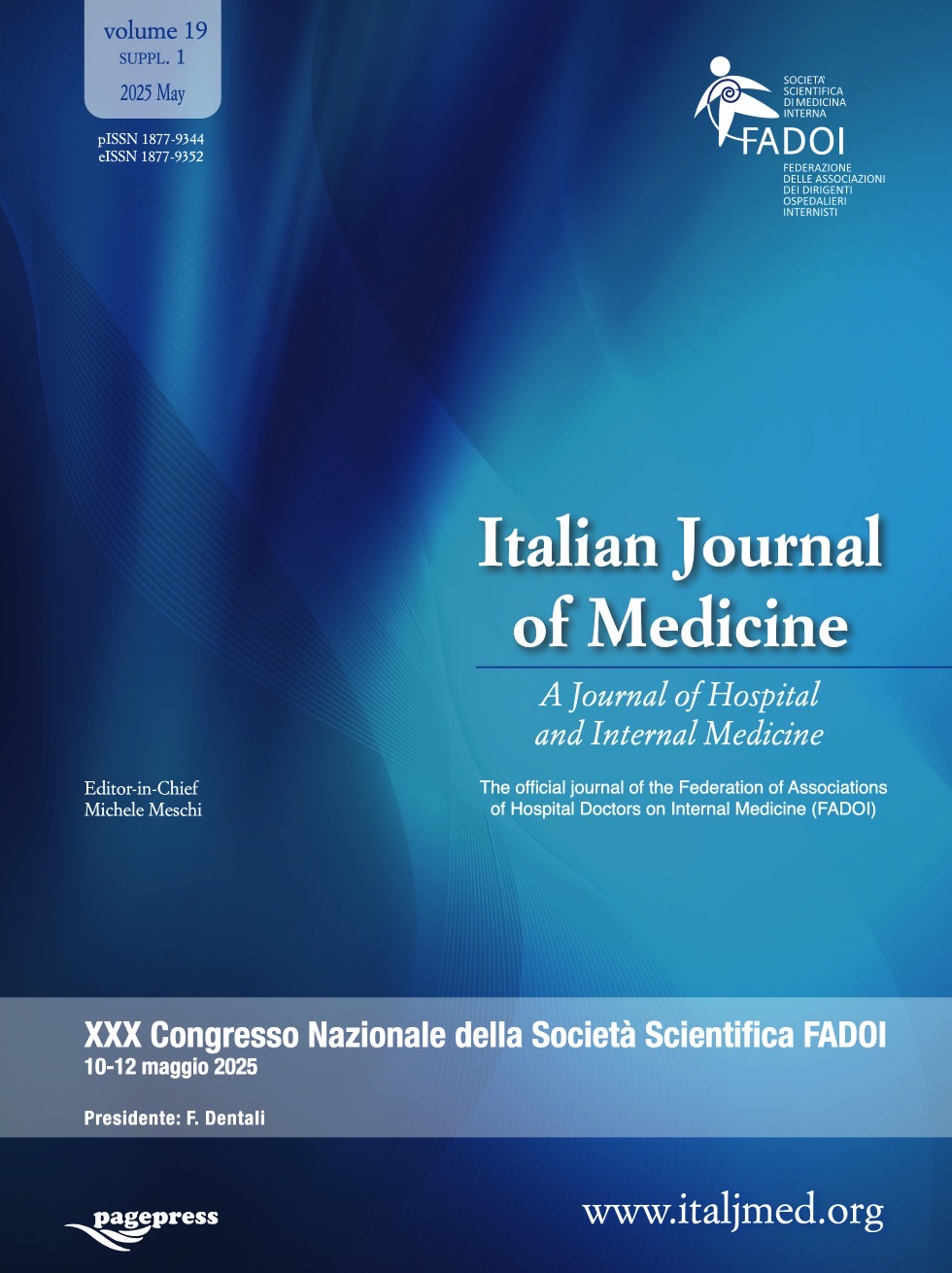XXX FADOI Italian Congress | 10-12 May 2025
27 August 2025
Vol. 19 No. 1(s1) (2025): XXX FADOI Italian Congress | 10-12 May 2025
P101 | Metainflammation and coagulation response of the obese patients during sepsis: an observational-prospective study
L. Molinari1, A. Di Vincenzo2, B. Barbato2, C. Purificati2, A. Postal2, S. Pavone2, M. Marchegiani2, S. Cuppini1, L. Spiezia3, R. Vettor2 | 1Medicina Interna, Azienda Ospedaliera di Rovigo, 2Clinica Medica 3, Azienda Università degli Studi di Padova, 3Medicina Generale, Azienda Università degli Studi di Padova, Italy
Publisher's note
All claims expressed in this article are solely those of the authors and do not necessarily represent those of their affiliated organizations, or those of the publisher, the editors and the reviewers. Any product that may be evaluated in this article or claim that may be made by its manufacturer is not guaranteed or endorsed by the publisher.
All claims expressed in this article are solely those of the authors and do not necessarily represent those of their affiliated organizations, or those of the publisher, the editors and the reviewers. Any product that may be evaluated in this article or claim that may be made by its manufacturer is not guaranteed or endorsed by the publisher.
36
Views
0
Downloads







